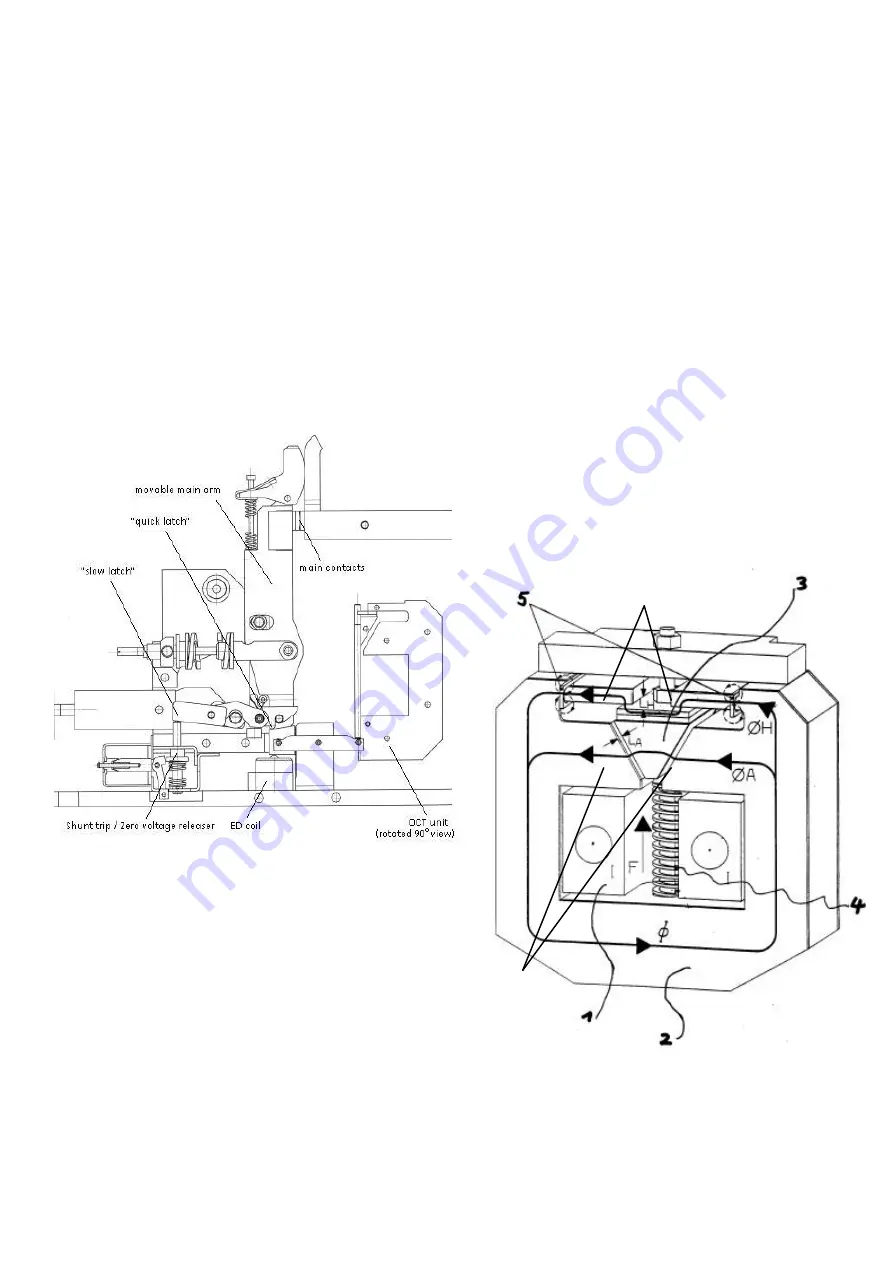
S47183-e 01/2008
Design and specifications are subject to change without notice
7
3.2.3 Mechanism
•
The Gerapid is equipped with a modular designed
mechanism, wear-resistant and nearly maintenance-
free. This mechanism ensures an extended electrical
and mechanical endurance of the breaker as well as a
high amount of safety for all operation conditions.
•
This mechanism is mechanically latched in CLOSE posi-
tion. The principle of a mechanical latch mechanism of-
fers the big advantage, contrary to often used holding
magnet system. No auxiliary control power source is re-
quired to keep close.
•
The mechanism is provided with two latches [Fig. 6]. One
of the latches, “slow latch”, is used for opening under
normal conditions, like actuation of shunt trip or zero-
voltage release. The other one, “quick latch”, de-clutches
the main contact arm from the mechanism and open
contacts with an extremely short delay. This is used in
case of short-circuit or overloads. All safety releases op-
erate onto this latch.
Fig. 6 Latching and tripping system
3.2.4 Over-Current Tripping device (code nr: 7)
•
The OCT device is a release magnet with twin magnet
circuits, optimizing the twin magnetic field principle [Fig.
7]. This technology ensures an equally fast tripping in
both current directions.
•
The magnetic system does not require an auxiliary con-
trol voltage to operate. It uses magnetic energy from the
main circuit.
•
The system consists of the holding circuit [6], the mov-
able armature [3] and the tripping circuit [7]. The holding
and the tripping magnetic circuits are both excited by
main current [1]. Until the static overload release’s re-
sponse threshold has been reached, the armature [3] is
held in position by the holding flux (
Φ
H) [2] and the
counter spring’s force [4]. Once the main current ex-
ceeds the set static response threshold, the attraction
flux (
Φ
A) [2] takes over and pulls rapidly down the flexi-
ble armature [3]. During this operation, the armature hit
the seesaw, which releases the quick latch in the
mechanism. The latch and contacts are opened imme-
diately.
•
The response threshold can be easily adjusted by turn-
ing the adjustment nut with a SW6 hexagon wrench as
described in point 2.3.2.
•
In combination with the transparent side protection
covers (code nr: 15), a fixed mounted insulated knob is
available to enable OCT adjusting [Fig. 16].
1. Current flow direction.
2. Magnetic core with two fluxes (holding flux
Φ
H and attracting flux
Φ
A).
3. Movable anchor.
4. Pressure spring for movable anchor.
5. Short circuit rings.
6. Holding magnetic circuit.
7. Tripping magnetic circuit.
Fig. 7 OCT device
6
7








































